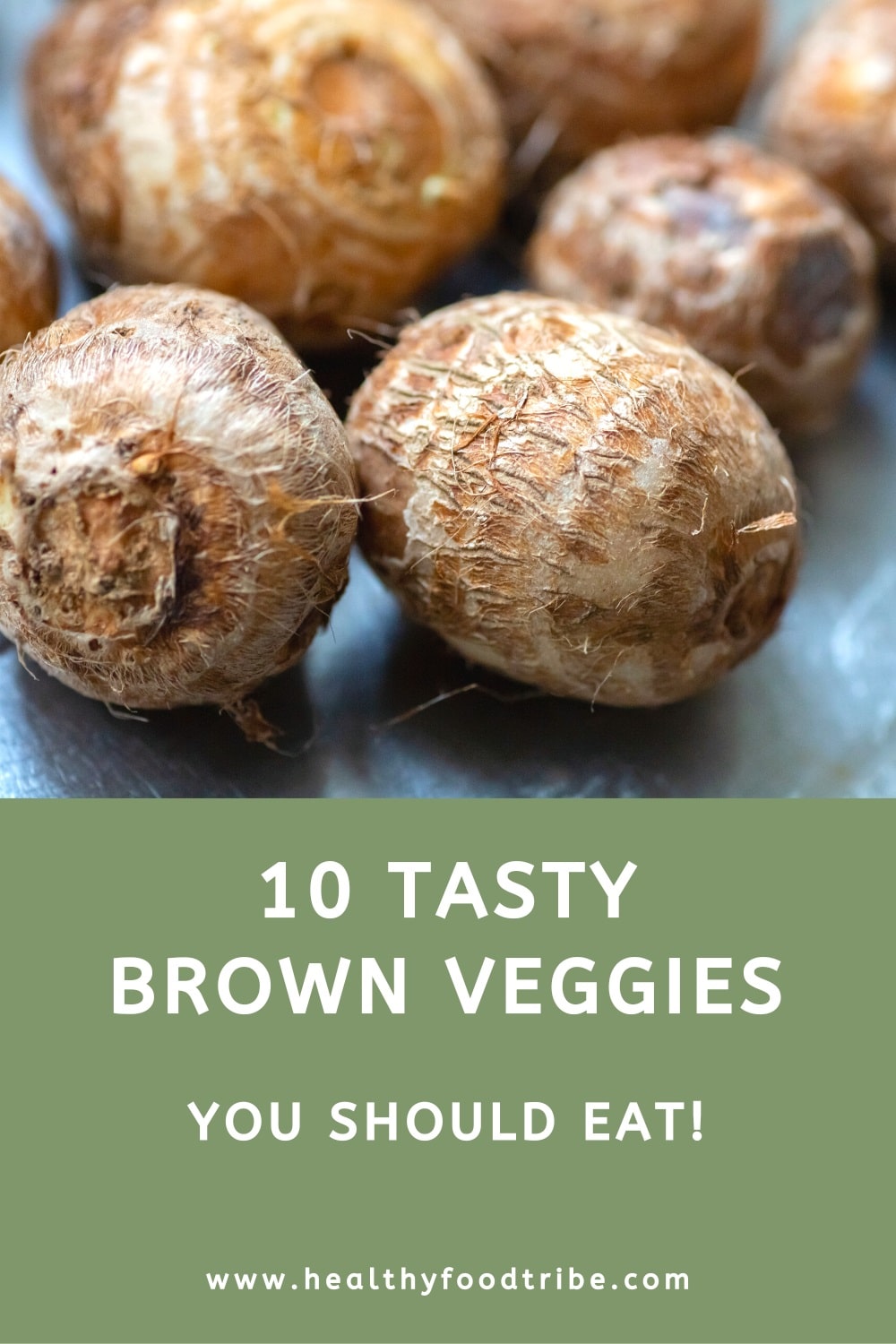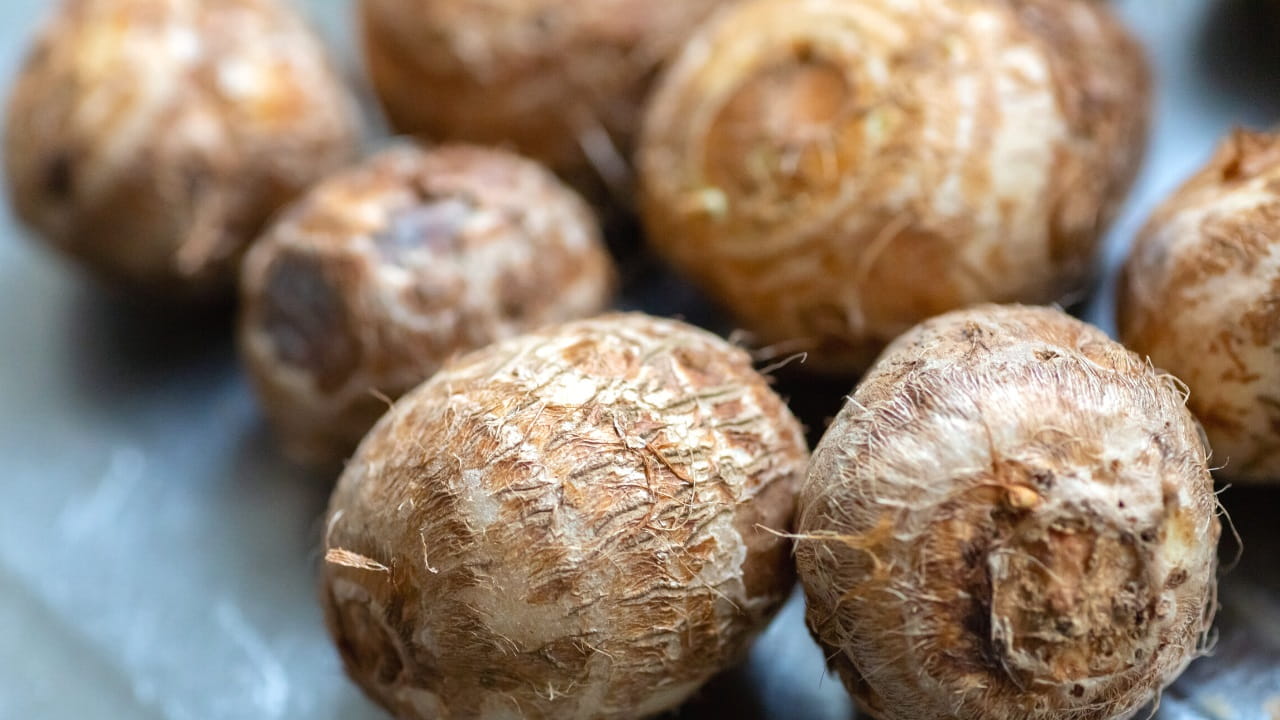Last updated: October 9, 2023
A list with ten of my favorite brown vegetables from around the world, each with unique flavors, shapes, and nutritional profiles.
Brown veggies may not be the most exciting foods to look at, but these unremarkable-looking offerings from the plant world are still worth including in your recipes and meals.
In this article, I will share my personal top 10 brown vegetables that you’ll want to hunt down at the grocery store. I am also including information on their origins, where to find them, and how best to prepare and eat them.
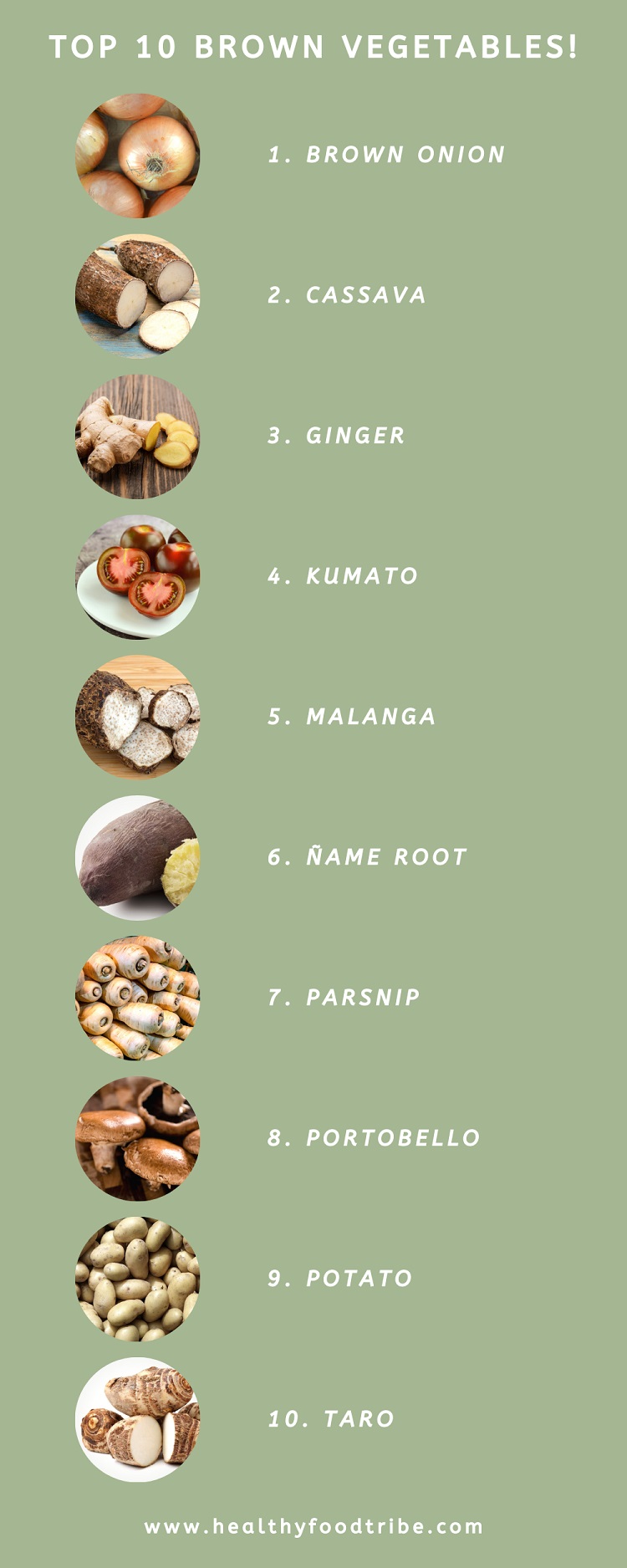
Top 10 Brown Veggies
In alphabetical order, here are ten brown veggies you should start eating!
1. Brown Onion
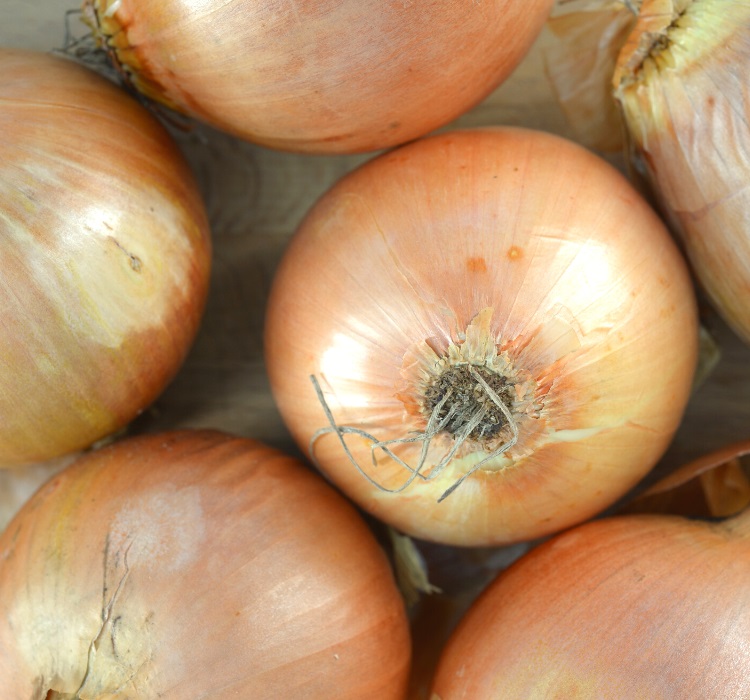
Brown onions are more commonly known as yellow onions because of their opaque yellow flesh. But the first thing you’ll see when reaching for one of these alliums is the golden-brown paper skin that encases them.
This onion is by far the most popular. It represents 90% of the onions grown in America and is the most cultivated variety in Europe. Compared to white and purple onions, brown onions have a stronger flavor. They contain more sulfur which gives them a bite that is sure to make your eyes water. Their potent, complex flavor makes them a favorite for cooking.
Bulb onions likely originated in Asia and have been cultivated by humans for thousands of years. Brown onions were likely the first type to be grown, eventually giving rise to the other varieties we have today. All onions are excellent sources of vitamin C and potassium, and also have plenty of fiber, folate, and vitamin B6.
2. Cassava

Cassava is the thick brown root most often cultivated to create a special kind of flour. This flour is called tapioca and is used as a thickening agent in everything from pudding to crackers.
While most cassava consumption comes in this form, the root can also be used as a vegetable. But it must be soaked for long periods or well-cooked to remove the cyanide present inside the root. When properly prepared, cassava can be used much like yams, taro, or other starchy roots. It has a mild, nutty flavor that goes with a variety of dishes.
Cassava is native to South America and was likely domesticated around 10,000 years ago. Native tribes in the area used the root to make bread and other staples. While Spanish colonizers refused to eat it, they were largely responsible for spreading cassava throughout the world.
3. Ginger

Ginger may be one of the only brown-stem vegetables we eat. This multi-fingered horizontal stem has paper-thin tan skin that covers yellow, fibrous flesh. The plants that grow from it are well-celebrated for their colorful, exotic-looking flowers.
A close relative of turmeric, ginger originated on islands in Southeast Asia. It was a “canoe plant” of the Austronesian peoples. They helped spread ginger throughout the Pacific islands all the way to Hawaii as far back as 5,000 years ago.
Ginger has a unique warming spice action and a sweet, biting aroma. It has long been used as a flavor enhancer and is also eaten raw. It is popular in Asian dishes and drunken as a tea. While this root is not an excellent source of vitamins or minerals, it is loaded with antioxidants.
How to keep ginger fresh.
How to peel and cut ginger.
How to grow and harvest ginger at home.
4. Kumato
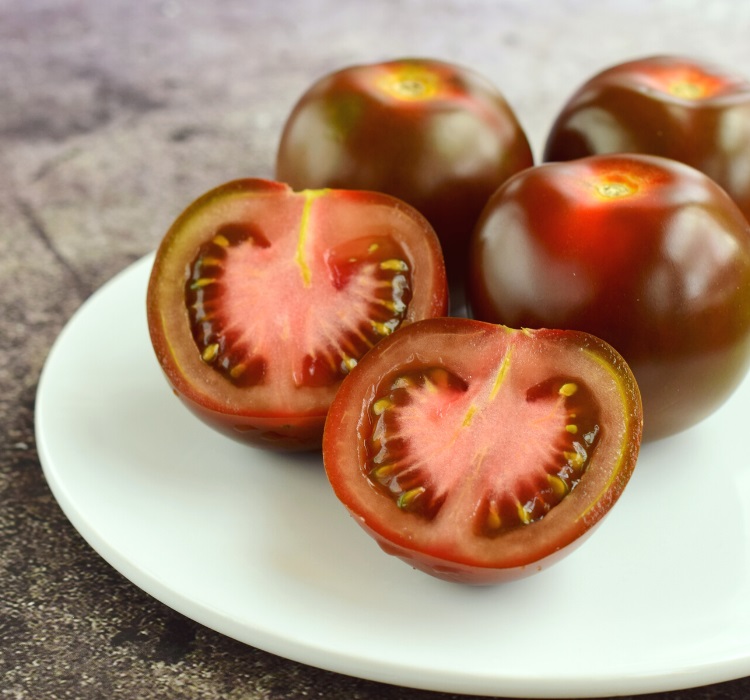
The Kumato is a patented hybrid tomato with brownish-red skin and green-red flesh. It was created in Spain by seed researchers who wanted to create a variety that could grow in salty soil. Interestingly, one of the species used to create the Kumato is a wild tomato native to the Galapagos Islands.
One of the most distinguishing features of this unique cultivar is that it ripens from the inside out. The skin starts out brown, begins to get hints of red, then turns a sort of golden green. Oddly, it can be eaten at any of these stages.
The flavor of a Kumato ranges from mild to intense to noticeably sweet as it ripens through these stages. Depending on the stage, they are ideal for cooking and eating raw.
5. Malanga
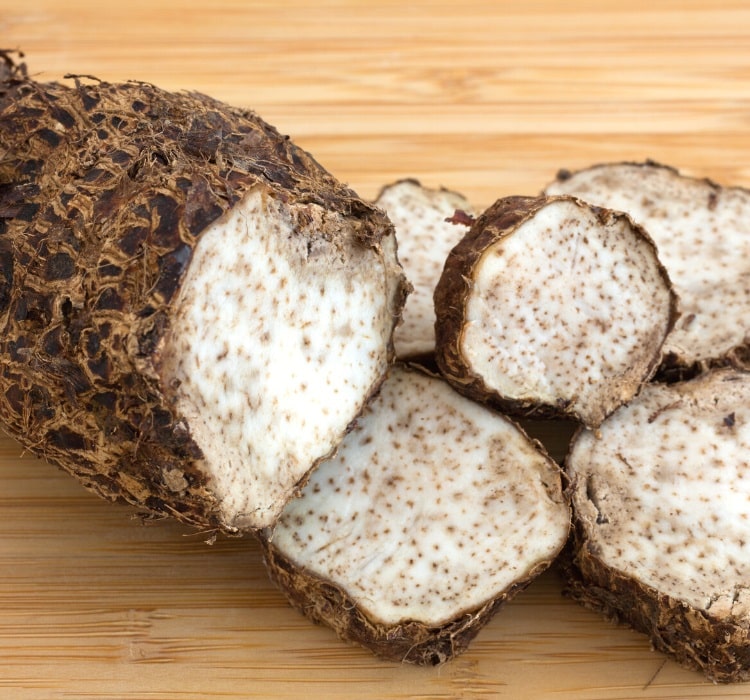
Malanga is a brown vegetable that is often confused with taro. While closely related, malanga is in the genus Xanthosoma while taro is in Colocasia. The edible part of both plants is the corm, the starchy, swollen stem base that sits above the roots.
This tropical plant is native to Africa and grows widely in the Caribbean and South America. Indigenous people have been consuming it for centuries. It is most often milled into flour to make bread.
Compared to taro, malanga is longer and skinnier. It also has darker, somewhat hairy skin. The flesh is potato-like but denser. It can also be used as a replacement for potatoes, but it must be cooked to neutralize toxins. Malanga has an earthy flavor with nutty undertones.
6. Ñame Root
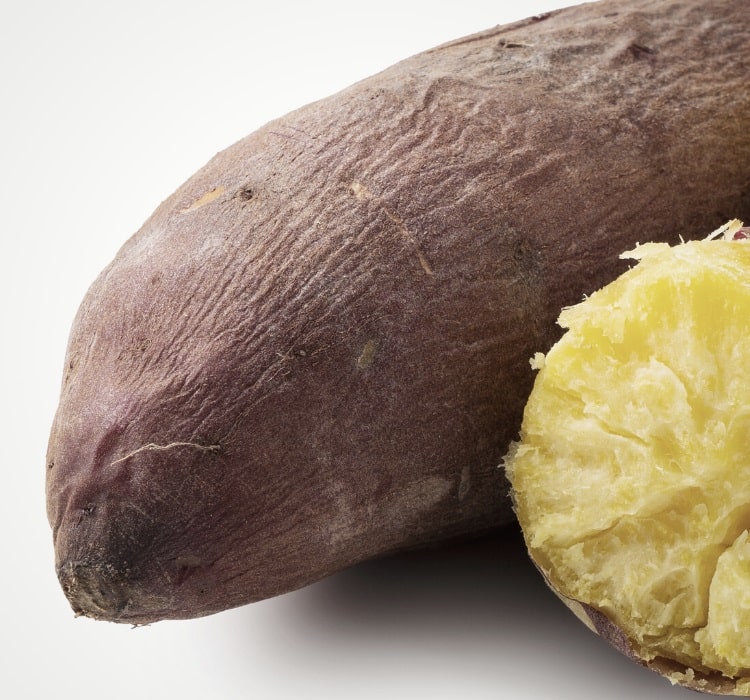
Ñame root, pronounced “nyah-may”, is another brown tuber common in the tropics. Its origins are in Costa Rica, but it is now widely cultivated in countries around the equator. It is often referred to as yellow guinea yam and yellow yam, but it is not the same as a traditional yam.
These tubers can be bulbous or elongated and look similar to a sweet potato but with brown, hairy skin. The flesh inside is creamy white or yellow.
Ñame root has a nutty flavor and somewhat chewy texture. It can be used in all the same ways as traditional potatoes. It provides plenty of vitamins A and C, iron, and calcium.
7. Parsnip

Parsnips are the lightest of the brown vegetables on this list. Straight out of the ground, they have a deep tan color but lighten to whitish-brown after a thorough washing. Once cooked, they take on more of a golden hue.
These root vegetables look a lot like carrots and are closely related to them and parsley. They’re native to Eurasia and were likely cultivated as far back as the ancient Greeks.
Parsnips have a nutty, earthy flavor with a sweetness like yams. Plants that have been overwintered and harvested in the spring are especially sweet. Like other root veggies, parsnips are excellent when roasted and can also be mashed, riced, or eaten raw.
Parsnip is very light-brown, almost white when washed. Check out my guide to white vegetables for more light-colored veggies from around the world.
8. Portobello Mushroom
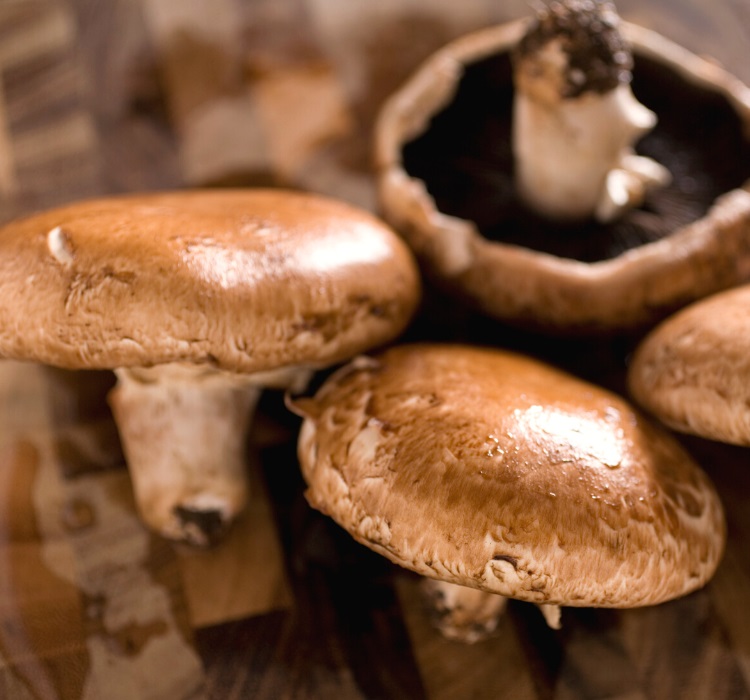
Most people are familiar with portobello mushrooms, though we can’t seem to agree on how to spell the name. Portobella mushroom and portabella mushroom are also common spellings.
What most people don’t know is that cremini, white mushrooms, and button mushrooms are also portobellos. These names apply in the immature form, in which they can be brown or white. As they get larger, their round flat caps take on a dark brown hue.
Portobellos have a steak-like consistency and savory, umami flavor. They are excellent when grilled or sauteed, and can also be baked or eaten raw. What’s great is that they are low-calorie and loaded with minerals.
Read my guide to edible mushroom varieties for more of these tasty mushrooms you should try.
9. Potato

The most popular of all the starchy brown tubers is the potato. But not all potatoes are brown. This staple food has made our lists of blue, purple, and red vegetables. But some of the most common types of potatoes, including russet and Yukon, have brown skin.
The flesh inside these brown tubers varies from milky white to yellow. All are highly starchy and enjoyed around the world for their versatile uses. Despite their association with Ireland and Idaho, potatoes originated in South America.
Potatoes are an excellent source of vitamins C and B6, potassium, and folate. They are higher in calories than most vegetables thanks to all that starch, but they’re still a healthy whole food to include in most diets.
10. Taro
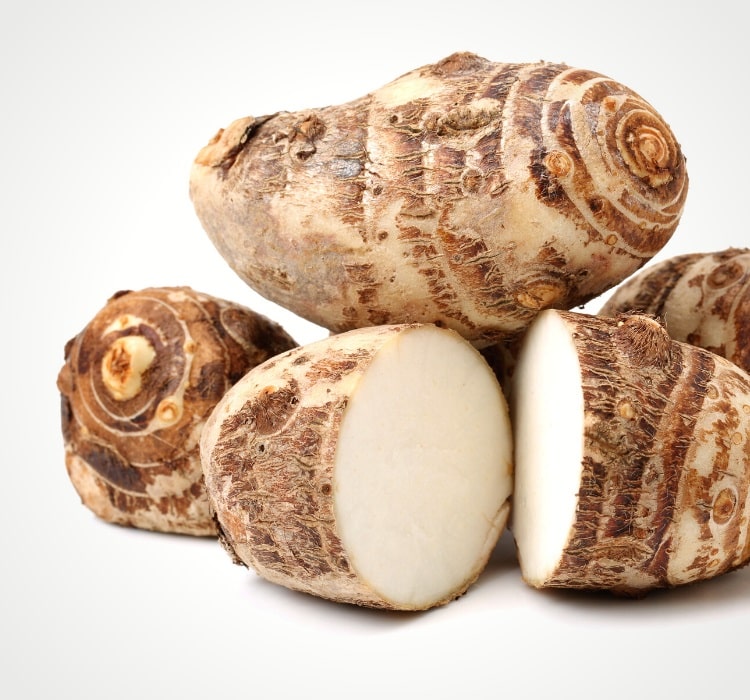
Taro is another corm vegetable important to indigenous cultures throughout the tropics. It is native to Southeast Asia and is one of the most ancient cultivated crops. The Polynesians used taro as a “canoe crop”, bringing it with them as they settled among the Pacific islands.
The skin of taro corms is light brown, and the flesh is white with specks of purple. These corms are typically boiled, baked, or roasted. They can also be ground into flour to make poi and bread.
Taro is sweeter than malanga and very nutty. Raw taro is high in calcium oxalate and toxic, but once cooked or soaked in cold water, the toxins are neutralized and the roots and leaves of the plant become safe to eat.
